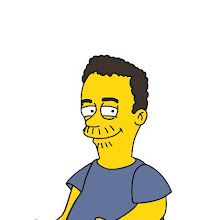Tony came over last night so we could go over some concepts and some tools. I went through my knowledge of ICM with him. I'm no expert myself, so it was very informative for me to go back over the basics and work through some chip stack examples to see how equity works in a SNG situation.
We also went through PokerTracker 3 - he has had some trouble getting it set up on his laptop - so we got that going. Then we looked at some PT3 stats to look for some leaks. Tony's game is a pressure game, which can obviously be successful, but in a SNG can also mean a quick loss if you misread your opponent and you start pressuring into people with good hands or people who won't fold. It was interesting to see that his stats reflected this style. One example is that Tony tends to lose money with Ace-9/8/7 type hands - a clue that he is overplaying them. On the positive side, he has won 3.00 BB (big bets, or 2 big blinds) / 100 hands with Aces in the hole, whereas I have won only 2.53 BB/100. He gets paid more for his big hands because of his aggression. My tighter style means that people are more wary when I get involved in a hand.
We then flipped up PokerStove to go over some hand combinations. We looked at examples of A8 vs. hands like KQ/KJ. Sure, Ace Rag is a favorite, but only one the 60/40 -ish side of things. Tony asked a good question - how big of an edge do you need before it's "go time"? One theory states that you should push every edge you have, even small edges like this one, but I've also heard that this logic is flawed in a SNG environment.
In a cash game, sure, every edge should be exploited- you can simply reach into your pocket and reload if 40% of the time that you lose, but if you win $x 60% of the time, then you're ahead.
In my opinion, here is much easier money to be made in blind-stealing and straight "I'm playing my position, not my cards" type of poker in a SNG, than worrying about getting it all in with a 60-40 edge.
There are also times in a SNG when you know that you're a big favorite. Either you're against a bad player with AK and you hit your Ace - and you just know you have him outkicked, or you flop your set, or occassionally you might even get dealt the Aces with someone raising into you (at least I hear that this happens occasionally, I usually get my bullets dealt to me in the big blind and the table folds around to me).
And if you don't get into a "big edge" situation early, you can always stay alive when the blinds are big and you switch over to "push or fold ICM mode", where you have mathematical theory backing up plays that will add money to your bankroll (over time).
We then jumped into a $10 SNG (as one player) just to talk style as we played. We came across a couple of hands where Tony and I would have played them differently, and it was interesting to talk through the logic of the plays.
I was hoping to get to the end so we could run through some ICM scenarios, but the poker gods weren't allowing that tonight. I shoved over an aggressive player with queens and 12 big blinds and he flipped over kings. Whoopsie. The aggro player hits a hand just as I do and takes all my money.
Sounds like Tony's game.
11 months ago

2 comments:
"One theory states that you should push every edge you have, even small edges like this one, but I've also heard that this logic is flawed in a SNG environment."
Let's say you can take a 60-40 edge your way for all your chips (in a SNG). Should you do it?
I think the answer depends on the size of your chip stack. If your stack has dribbled down from 1500 to 900, then it's probably time to gamble. If you have plenty of chips, then why do it? I make the assumption that I am better than the others, so I wait for a better spot.
Do you agree?
Yes, I agree that the tourney situation (stack size, etc) plays a big part of when to "take your shot".
Post a Comment